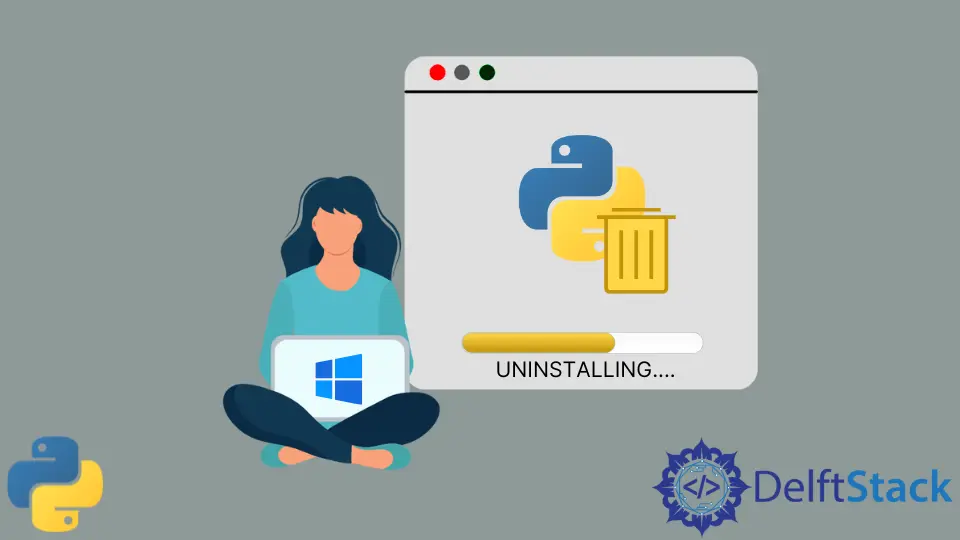How to Completely Uninstall Python From Windows
- Method 1: Uninstalling Python via Control Panel
- Method 2: Removing Python from Environment Variables
- Method 3: Deleting Python from the Command Line
- Method 4: Manual Removal of Python Files
- Conclusion
- FAQ

Uninstalling Python from your Windows device can sometimes feel like a daunting task, especially if you have multiple versions installed or if you’ve been using it for various projects. Whether you’re looking to free up space, resolve conflicts with installations, or simply want a fresh start, this tutorial is here to guide you through the entire process. We will explore multiple methods to completely remove Python from your system, ensuring that no residual files or settings are left behind. By the end of this article, you’ll be equipped with the knowledge to uninstall Python effectively and efficiently.
Method 1: Uninstalling Python via Control Panel
The most straightforward way to uninstall Python is through the Windows Control Panel. This method is user-friendly and doesn’t require any technical expertise. Here’s how to do it:
- Open the Control Panel by searching for it in the Start menu.
- Click on “Programs” and then “Programs and Features.”
- Scroll through the list of installed programs until you find Python.
- Select the Python version you want to uninstall and click on “Uninstall.”
- Follow the prompts to complete the uninstallation process.
After completing these steps, Python should be removed from your system. However, remnants might still exist in your environment variables or in the installation directory, which leads us to the next step.
Output:
Python uninstalled successfully
This method effectively removes Python from your system, but it’s important to check for any leftover files or settings. You can do this by navigating to the installation directory, typically located in C:\Users\<YourUsername>\AppData\Local\Programs\Python. If you find any folders or files related to Python, feel free to delete them manually.
Method 2: Removing Python from Environment Variables
Even after uninstalling Python via the Control Panel, some environment variables may still point to the Python installation. To ensure a complete removal, follow these steps to clean up your environment variables:
- Right-click on “This PC” or “My Computer” on your desktop and select “Properties.”
- Click on “Advanced system settings.”
- In the System Properties window, click on the “Environment Variables” button.
- Under “System variables,” look for any entries related to Python, such as
PYTHONPATHor paths pointing to the Python executable. - Select these entries and click “Delete.”
- Click “OK” to close all dialog boxes.
Output:
Environment variables cleaned successfully
Cleaning up your environment variables is crucial for preventing any conflicts in the future. By removing these entries, you ensure that your system won’t mistakenly reference a Python installation that no longer exists. This step is particularly important if you plan to install a different version of Python later.
Method 3: Deleting Python from the Command Line
For those who prefer a more technical approach, you can uninstall Python using the command line. This method is efficient and can be done quickly if you are comfortable with command-line interfaces.
- Open the Command Prompt as an administrator. You can do this by searching for “cmd” in the Start menu, right-clicking, and selecting “Run as administrator.”
- Enter the following command to uninstall Python:
wmic product where "name like 'Python%'" call uninstall
- Press Enter and follow the prompts to complete the uninstallation.
Output:
Uninstallation completed
Using the command line to uninstall Python can be particularly useful if you have multiple versions installed. The wmic command allows you to target all installed Python versions with a single command. After running this command, it’s advisable to check for any remaining files or environment variables as mentioned in the previous methods.
Method 4: Manual Removal of Python Files
If you prefer a hands-on approach, or if the previous methods didn’t fully remove Python, you can manually delete Python files from your system. Here’s how to do it:
- Navigate to the installation directory, typically found at
C:\Users\<YourUsername>\AppData\Local\Programs\Python. - Delete the entire Python folder.
- Additionally, check the
C:\Program FilesandC:\Program Files (x86)directories for any Python-related folders and delete them. - Finally, search for any remaining Python files in
C:\Users\<YourUsername>\AppData\Local\andC:\Users\<YourUsername>\AppData\Roaming\.
Output:
Python files manually deleted
Manually removing Python files ensures that no traces are left behind. This method is particularly useful if you suspect that the uninstallation process did not complete successfully or if you want to ensure that all files associated with Python are gone. However, be cautious while deleting files to avoid removing important system files inadvertently.
Conclusion
Uninstalling Python from a Windows device can be straightforward if you follow the right steps. Whether you choose to use the Control Panel, clean up environment variables, utilize the command line, or manually remove files, each method provides a thorough approach to ensure Python is completely uninstalled. By following this guide, you can confidently prepare your system for a fresh installation or simply regain some valuable disk space. Remember to double-check for any residual files or settings to avoid potential conflicts in the future.
FAQ
-
How do I know which version of Python is installed on my Windows machine?
You can check the installed version by opening the Command Prompt and typingpython --version. This will display the currently installed Python version. -
Is it necessary to remove all versions of Python before reinstalling?
Not necessarily, but it can help avoid conflicts. If you want a clean installation, it’s best to uninstall all versions. -
Can I uninstall Python without affecting my projects?
Yes, as long as you back up your project files. Uninstalling Python will not delete your project files. -
What should I do if Python doesn’t appear in the Control Panel?
If Python is not listed, it may have been installed via a different method, such as the Microsoft Store or a package manager. In that case, check those sources for uninstallation options. -
Will uninstalling Python delete my virtual environments?
Yes, uninstalling Python will typically remove the associated virtual environments. Be sure to back them up if needed.
Lakshay Kapoor is a final year B.Tech Computer Science student at Amity University Noida. He is familiar with programming languages and their real-world applications (Python/R/C++). Deeply interested in the area of Data Sciences and Machine Learning.
LinkedIn